Colour is more than just a design choice it’s a powerful language that speaks directly to human emotions. In branding, colours are not arbitrary; they shape perceptions, influence decisions, and build lasting connections. The right palette can make a brand feel trustworthy, luxurious, playful, or innovative.
The wrong one can create confusion or weaken recognition. Understanding the psychology of colour helps brands choose shades that align with their identity and values.

Why Color Matters in Branding
- First Impressions: Studies show that people make subconscious judgements about a product within 90 seconds — and up to 90% of that judgement is based on colour.
- Emotional Impact: Colours trigger emotions and associations. For example, red is often tied to energy and urgency, while blue conveys trust and calm.
- Recognition: Brands are easier to recognise when their colour schemes are consistent. Consider the red of Coca-Cola, the robin egg blue of Tiffany, or the golden arches of McDonald’s.
What Different Colors Communicate
- Red: a colour that conveys passion, urgency, and excitement. Often used to attract attention and pique appetites in the food, entertainment, and retail industries.
- Blue: professionalism, composure, and trust. well-liked by tech, financial, and medical companies looking to promote dependability and security.
- Green: expansion, harmony, and sustainability. frequently linked to finance, eco-friendly brands, and wellness.
- Yellow: Hope, cosiness, and optimism Used by brands that want to appear cheerful, friendly, and approachable.
- Black: Sophistication, elegance, authority. Favoured by luxury and fashion brands to communicate timeless exclusivity.
- White: Clarity, simplicity, and purity. Often used in minimalistic designs and tech branding.
- Purple: Creativity, royalty, imagination. Perfect for companies that value uniqueness and innovation.
- Orange: vigour, excitement, and fun. Effective for lifestyle, sports, and entertainment brands.
Industry-Specific Insights
1. Fashion
Colour is essential for establishing identity in fashion branding. While labels like Bershka or Zara experiment with bright campaign palettes to appeal to young, trend-driven audiences, luxury brands like Chanel and Dior mainly use black and white to communicate timeless elegance. In fashion, colour is aspirational as well as beautiful.
2. Hospitality
Colour is frequently used by hospitality brands to establish the mood of the visitor experience. Four Seasons Hotels and Resorts, for instance, use a sophisticated black-and-gold palette to reflect timeless luxury and refinement. In the meantime, warm and rich hues are used by companies like Marriott and Taj Hotels to create a feeling of familiarity, comfort, and prestige throughout their local and international properties.
3. Technology
Blue and white are popular among tech brands for a reason: clarity, simplicity, and trust. Apple’s white minimalism emphasises innovation and usability, while Microsoft’s multicoloured logo symbolises diversity and creativity. Green is used by entertainment tech companies like Spotify to symbolise vitality, community, and expansion.
4. Food & Beverage
Food brands strategically employ colour to arouse feelings and appetite. McDonald’s red and yellow aren’t merely for show; they’re psychologically engineered to pique appetite and encourage impulsive behaviour. Conversely, Starbucks’ green colour scheme promotes balance and comfort, which is consistent with its community-focused brand promise.
5. Automotive
To convey strength and status, luxury automakers use a carefully chosen colour scheme. For instance, Mercedes-Benz’s branding frequently incorporates the colours silver, black, and white, which stand for sophistication, timeless design, and technological accuracy. Meanwhile, more youthful automotive brands may incorporate brighter colours to connect with adventurous drivers.
Case Studies in Color Branding
- Coca-Cola (Red): The vibrant red instantly conveys energy, excitement, and togetherness. Coca-Cola’s dominance during holiday seasons like Christmas is no accident.
- Tiffany & Co. (Blue): Its trademarked robin egg blue is so closely associated with exclusivity and luxury.
- Starbucks (Green): Green communicates harmony and community. Starbucks uses it to demonstrate its commitment to sustainability and connection.
- Apple (White/Minimal): In keeping with its promise of user-friendly technology, Apple’s simple, white design exudes creativity and simplicity.
- Spotify (Green): In the entertainment sector, a striking green logo stands out as a symbol of vitality, innovation, and expansion.
Choosing the Right Colors for Your Brand
- Know Your Audience: Different demographics and cultures interpret colours differently. Research your market before deciding.
- Reflect Your Values: Pick hues that complement the personality and mission of your brand.
- Think Beyond Trends: A classic colour scheme is worth more than a fad that goes out of style quickly.
- Restrict Your Colour Scheme: In order to maintain consistency, powerful brands typically only use one or two primary colours.
- Test and Refine: Use A/B testing or focus groups to see how audiences react to your colours.
Conclusion
Selecting colours that speak to your brand’s language is the goal of colour psychology in branding, not picking your favourite shade. Brands can design palettes that captivate audiences and endure over time by knowing the meanings and emotions associated with colours. Your choice of colour says a lot, whether you’re a tech company trying to be clear, a fashion house trying to be elegant, or a hospitality brand offering experiences. Colours are ultimately felt rather than just seen, and the most successful brands are adept at using the right hues to evoke strong emotions.













